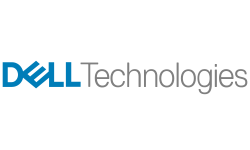ADC Comparison
Compare load balancers: Loadbalancer.org vs F5 Big-IP and Citrix NetScaler ADC
Load balancers or application delivery controllers (ADCs) allow organizations to cost-effectively scale their operations while ensuring high availability and an outstanding user experience. But which one is right for you? Here is a comparison of Loadbalancer’s Enterprise ADC versus the F5 Big-IP and the Citrix NetScaler ADC.
Load balancers or application delivery controllers (ADCs) allow organizations to cost-effectively scale their operations while ensuring high availability and an outstanding user experience. But which one is right for you? Here is a comparison of Loadbalancer’s Enterprise ADC versus the F5 Big-IP and the Citrix NetScaler ADC.
Let's help you choose the best option — for you
Why not Citrix NetScaler?
- Very pricey
- Ownership & direction rapidly changing
- Baseline support can struggle
- Poor account management
- Brutal EOL policy
Why not F5 BIG-IP?
- Costs a fortune
- Super complicated
- Need a specialist to make changes
- Pain of iRules
- Redundant functionality
Why Loadbalancer?
- We’re a lot cheaper
- Free migration consultancy
- Easy to use, with amazing support
- Site licence & pool licence that don’t rip you off
- We guarantee you won’t regret it
Let's compare what really matters — to you
| Model | Price inc. 24/7 Support | Throughput | SSL (TPS) | WAF | GSLB | |
|---|---|---|---|---|---|---|
| 4 Gbps | Loadbalancer Enterprise Prime | $6,690 | 4 Gbps | 10,306 | ||
| Citrix MPX 5900 | $44,000 | 1-10 Gbps* (subscription) | 8,000 | |||
| 10 Gbps | Loadbalancer Enterprise Flex | $13,380 | 48 Gbps | 19,584 | ||
| F5 BIG-IP r2600 | $27,900 | 10 Gbps | 5,000 | |||
| Citrix MPX 8920 | $60,000 | 20 Gbps | 22,000 | |||
| 100 Gbps | Loadbalancer Enterprise Max | $28,090 | 88 Gbps | 30,059 | ||
| Citrix MPX-15000 | $80,000 | 20-120 Gbps* (subscription) | 24,000 | |||
| F5 BIG-IP r5600 | $125,000 | 95 Gbps | 30,000 | |||
| Model | Price inc. 24/7 Support | Throughput | SSL (TPS) | WAF | GSLB | |
|---|---|---|---|---|---|---|
| 400 Mbps | Loadbalancer Enterprise VA Basic | $2,680 | 0.4 Gbps | 400 | ||
| Citrix VPX-200 | $18,300 | 0.2 Gbps | 500 | |||
| F5 BIG-IP VE-200M | $21,100 | 0.2 Gbps | ||||
| 4 Gbps | Loadbalancer Enterprise VA Prime | $5,350 | 4 Gbps | Unrestricted | ||
| F5 BIG-IP VE-1G | $37,500 | 1 Gbps | ||||
| Citrix VPX-3000 | $43,920 | 3 Gbps | 500 | |||
| 40 Gbps | Loadbalancer Enterprise VA Max | $11,245 | Unrestricted | Unrestricted | ||
| Citrix VPX-3000 | $43,920 | 3 Gbps | 500 | |||
| F5 BIG-IP VE-10G | $77,214 | 10 Gbps | 3,400 | |||
Citrix Pain Relief — Super Fast
“I just want to personally thank you for your assistance over the last week. No way could we have done a Citrix migration in 3 days without your help. The team can’t speak highly enough of the valuable insights you’ve given them.”
IT Director, Government Agency
Three reasons to choose Loadbalancer
We’re A LOT cheaper
“With Loadbalancer.org’s uncapped license, there are no restrictions, so we can increase their use on-demand, without any performance issues or cost implications.” Service Delivery Manager
Our End Of Life Guarantee
“We understand the challenges EOL can pose for our customers, so we simply don’t do it.” Co-Founder, Loadbalancer.org
Ease of migration
“Loadbalancer.org’s migration approach cut out many tasks and saved a huge amount of time and effort. Within a matter of days, we were up and running” Director IT Operations
Loadbalancer, loved and trusted by great companies all around the world









Formal endorsement of our products should not be denoted from the third party logos cited above. For further details refer to the ‘Disclaimer and Fair Use Statement’ in our Terms & Conditions.
How should you compare load balancers?
The load balancer (ADC) market is very mature, Loadbalancer.org itself has been established for more than 20 years. This market maturity means feature differences between the main vendors (F5, Citrix NetScaler, etc.) are relatively small. Therefore, for the most part the main comparison to be made is price versus throughput, although it is worth checking metrics such as SSL transactions and connections, as some suppliers do artificially throttle these. An additional area to keep an eye on when comparing load balancers is that of Web Application Firewall (WAF) and Global Server Loadbalancing (GSLB), where some vendors include as ‘standard’ and others charge as an ‘add-on’.
Throughput
Throughput is the amount of data, usually referred to as traffic, being (or capable of being) transmitted and received ‘over the network’ by a device such as a load balancer or server, per second. You may also be able to monitor the throughput of a VIP but this will always be limited by the capabilities of the device it exists on.
Typically the maximum throughput of a load balancer is determined by the maximum throughput (or speed) of all of its network interfaces combined. Our Enterprise Prime hardware appliance has four interfaces with a speed of 1Gbps so its maximum possible throughput is 4Gb.
However, you should also be aware that many load balancer vendors place artificial license restrictions on their devices, meaning that although the network interfaces are capable of higher throughput the appliance is still throttled for commercial reasons.
As an additional note, protocol overheads mean you’re only likely to actually achieve around 80% of the maximum theoretical throughput of an interface. It’s also worth keeping in mind that cloud based host virtual network interface throughput may be limited by factors other than the reported speed of an interface. So while the operating system may be presented with a virtual 1Gb network interface, its actual maximum possible throughput may be far lower.
SSL/TLS TPS
SSL/TLS Transactions Per Second. Establishing SSL/TLS security for a new connection is a CPU intensive operation and the number of new connections that can be handled at any one time is limited by the power of a device’s CPU(s). The key size used has a significant impact (using contemporary ECC keys, which are much smaller, will result in the highest TPS). Once a connection is secured and established things become far less taxing. A device can support hundreds of thousands or even millions of active SSL/TLS secured connections, but its capacity to establish new ones is limited by this figure.
HTTP RPS
HTTP RPS is number of incoming HTTP Requests Per Second that can be processed by a load balancer or server. As small as they usually are in comparison to responses, requests contain a lot of information that must be parsed to ensure they are valid, do not present a security threat and to make load balancing decisions based upon any number of components within the request. For this reason, the maximum number of RPS is significantly lower than the maximum number of connections a load balancer supports.
Connections
A connection is, typically, an established communication channel between a client (a user using a web browser for instance) and a server or site, although in reality this is almost always a load balancer. Where web based traffic is concerned, a client browser will typically open multiple, parallel connections to the same site (Chrome will open up to six for instance) in order to improve performance — one user rarely equals one connection.
Concurrent connections: this is the number of established connections between one or more users and a single server or load balancer. As we know the most common browser could open up to six connections to a site.
Why are people moving from F5 & Citrix to Loadbalancer?
Ease of use
Our intuitive Enterprise appliance is clever, not complex, making it easy to optimize even the most complex environments.
Seamless migration
Reduce risk and migrate faster with our seamless migration process, meaning you could be up and running in just a couple of days or weeks.
Cost
One of the most affordable solutions on the market, our appliance will save you thousands, and could be up to half the price of your existing F5 or Citrix ADC.
Value
Get more out of your Enterprise appliance with consultative support from our technical experts, lower maintenance and licensing costs, and greater utility.
Transparency
Our prices aren’t the only thing we’re transparent about. We don’t do hidden add-ons, and we don’t End-of-Life our appliance.